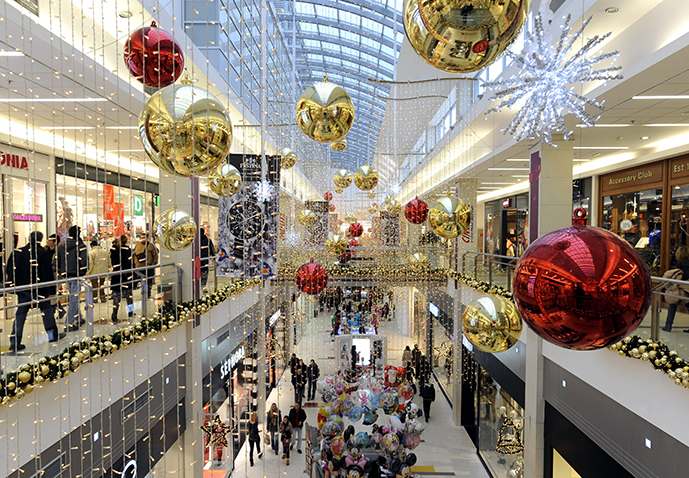New data from MRI Software reveals that footfall rose by +7.1% in December from November in all UK retail destinations, led by a +13.2% boost in shopping centre footfall, followed by a +5.7% rise in retail parks, and by +4.8% in high streets. This is the greatest month-on-month increase seen since 2019 when footfall rose by +8.7% for the same time period.
MRI reported that compared to 2023 levels, footfall in UK retail destinations was marginally higher by +0.4% in all UK retail destinations driven by a +1.2% rise in retail park activity. High streets also saw a marginal uplift of +0.3%, however, shopping centres saw a minor drop of -0.1%, which may well indicate the pressures of the cost-of-living crisis still existing for many.
Twenty-four-seven data revealed that footfall remained strong in all UK retail destinations during the evening and night time period with an average rise +1.6% recorded, suggesting not only a shift in when consumers are visiting retail destinations but the investment in leisure activities available to serve the growing evening and night-time economy.
MRI believes retailers are bracing themselves for a challenging start to 2025 following the Autumn Budget as it’s set to bring with it financial challenges; rising costs are anticipated and decisions will need to be made as to whether these costs are passed onto the consumers or absorbed by retail businesses.
Jenni Matthews, marketing and insights director at MRI Software, commented: “In 2024, Christmas Day fell midweek which provided consumers with an extra couple of days earlier in the week to head to the shops and grab last-minute gifts and groceries. Retail stores and destinations also benefited from an additional boost on the other side of Christmas as shoppers emerged from their post-Christmas slumber to take advantage of the Boxing Day sales and restock on groceries however this didn’t occur until December 27.
“A subdued start to the Boxing Day sales saw footfall decline by -4.9% in all UK retail destinations in comparison to Boxing Day last year. The decline in Boxing Day activity likely reflects a shift in consumer behaviour, influenced by the ongoing cost-of-living crisis. With footfall levels +18.1% higher in all UK retail destinations on Christmas Eve this year compared to Christmas Eve last year, many shoppers may well have concentrated much of their spending in a pre-Christmas rush.”
Matthews added that the growing presence of online shopping continues to reshape spending habits with many retailers kicking off their Boxing Day sales online on Christmas Day providing shoppers with the opportunity to grab early bargains from the comfort of their own home. Many key stores also remained closed on Boxing Day including John Lewis, Marks & Spencer, Next and Aldi.
Looking ahead to the next six months, MRI Software’s latest Consumer Pulse report revealed that 51% of shoppers are concerned about the rising cost of living driven primarily by higher energy and housing costs as winter approaches.
Matthews continued: “Retail leaders should bear these trends in mind as the surge in festive footfall may well be the last big splurge for many consumers ahead of what could be a spending freeze heading into early 2025. Leveraging data-driven insights to drive operational efficiencies such as adapting resourcing and energy to traffic peaks and troughs will become even more business-critical.”


